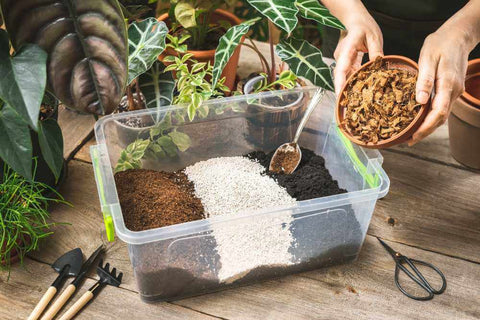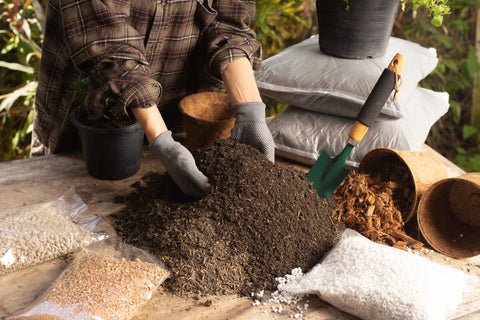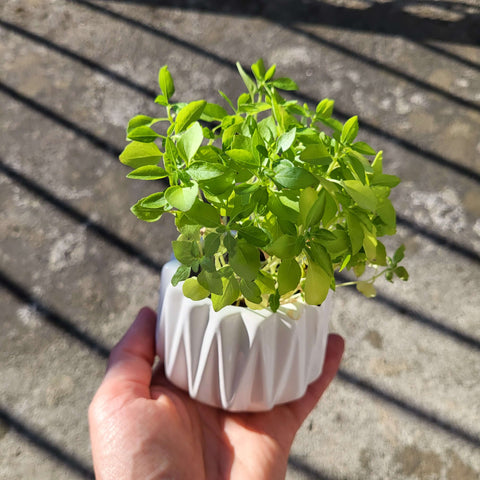A mixture of coco peat, perlite and vermiculite has recently become increasingly established as the ideal substrate for growing bonsai. This innovative mixture combines the best features of each component to provide an optimal environment for bonsai to grow and develop. In this article, we will explore why this mixture is so effective and how you can use it for your bonsai.
🌿 Coconut peat : A natural and sustainable choice
Coco peat, made from coconut fibers, is a natural and sustainable alternative to traditional substrates, such as peat moss. It is characterized by high porosity, which allows good aeration of the roots, while retaining moisture, which is essential for drought-sensitive bonsai. Coco peat also helps maintain a stable pH value of the substrate, which is important for nutrient absorption.
🌿 Perlite : For better drainage and aeration
Perlite, a volcanic glass used in gardening for its ability to improve drainage and aeration in the substrate, is an ideal addition to a bonsai potting mix. Its porous structure allows the roots to breathe freely, while preventing water retention, which could lead to root rot. Perlite is also lightweight, meaning it doesn't weigh down the bonsai's root system.
🌿 Vermiculite : A nutrient-rich supplement
Vermiculite, a mineral often used in horticulture, adds nutritional value to the mix. Vermiculite is known to improve water and nutrient retention in the substrate, allowing bonsai to better utilize available nutrients. Vermiculite also contributes to better substrate structure, which facilitates root growth and branching.
Why choose a mixture of coco peat, perlite and vermiculite?
This mix offers a balanced combination of aeration, drainage and moisture retention, which are essential for the health of bonsai. The coco peat provides a stable environment for the roots, the perlite improves drainage and aeration, and the vermiculite adds nutrients and improves water retention. Together, these three components create a substrate that supports healthy bonsai growth and development, while reducing the risk of common problems, such as root rot or drying out.
How to prepare the mixture?
Preparing this mixture is simple. You can start with equal parts coco peat, perlite , and vermiculite, then adjust the proportions depending on the specific needs of your bonsai. Some bonsai may need more perlite for better drainage, while others may need more coco peat for better moisture retention. The key is to observe your plants and adjust the mixture to create the ideal environment for them to grow.
A blend of coco peat , perlite and vermiculite represents a modern approach to bonsai cultivation, combining the best features of each component to create an optimal growing environment. This blend not only ensures proper aeration, drainage and moisture retention, but also helps maintain a stable pH level and provide nutrients, which are essential for healthy bonsai growth and development.
Due to its versatility and adaptability, this mixture is ideal for a wide range of bonsai species , from deciduous to coniferous. Gardeners can experiment with the ratios of ingredients to create a substrate that is perfectly tailored to the needs of individual plants. This approach not only promotes better health and vitality of bonsai, but also allows gardeners to connect more with their plants, as understanding and adapting the substrate requires observation and understanding the needs of each bonsai.
Additionally, using coco peat as a sustainable alternative to peat moss is a step forward towards more environmentally responsible gardening, which is important in a time when environmental awareness is increasingly important.
All of these benefits make a mix of coco peat, perlite, and vermiculite an excellent choice for anyone looking to provide the best possible growing conditions for their bonsai . With a little effort and attention, this mix can help your bonsai not only survive, but also thrive, providing years of beauty and enjoyment.



